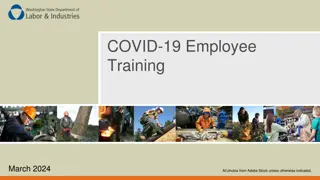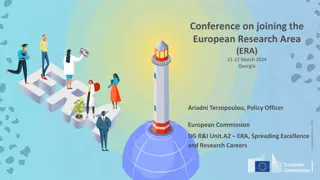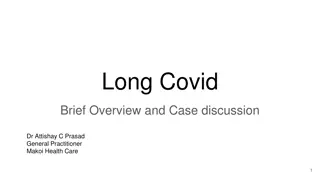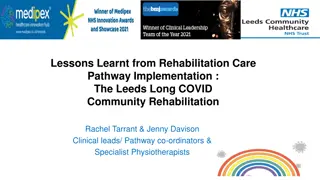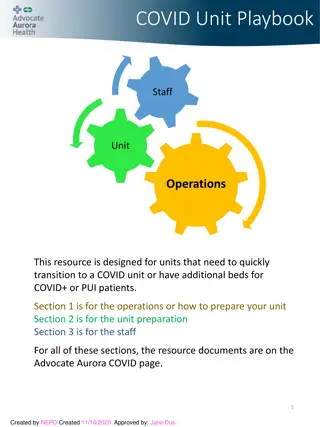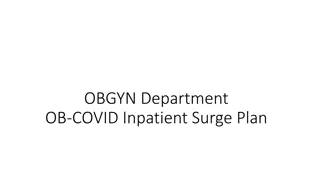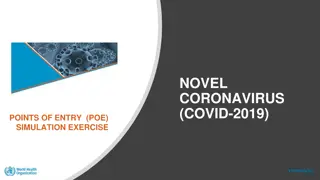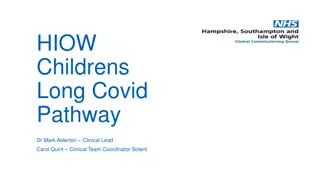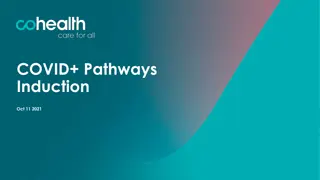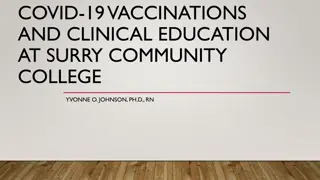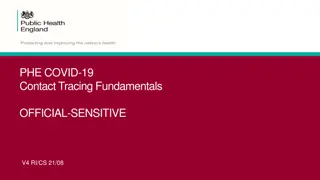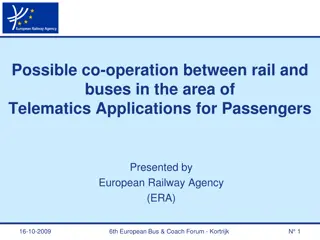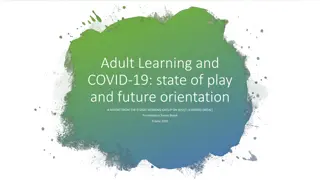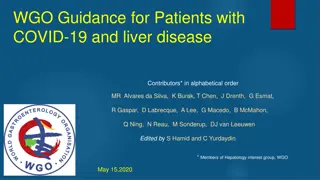Exploring New Considerations for Community-Based Learning in the COVID-19 Era
Community-Based Learning, also known as service-learning, integrates academic material with relevant community engagement, fostering civic outcomes and public purposes. This session delves into adapting community-based activities to address new needs and opportunities while ensuring safety and flexibility. Presenters from Bowling Green State University discuss modes of engagement and reflections on community partnerships in academic settings.
Download Presentation

Please find below an Image/Link to download the presentation.
The content on the website is provided AS IS for your information and personal use only. It may not be sold, licensed, or shared on other websites without obtaining consent from the author. Download presentation by click this link. If you encounter any issues during the download, it is possible that the publisher has removed the file from their server.
E N D
Presentation Transcript
NEW CONSIDERATIONS FOR COMMUNITY-BASED LEARNING IN THE ERA OF COVID-19 Bowling Green State University June 17, 2020
Presenters Paul Valdez, Associate Director, BGSU Center for Public Impact Dr. V. Rosser, Director, BGSU Center for Public Impact Denise Niese, Executive Director, Wood County Committee on Aging Caitlin Ballinger, Volunteer Coordinator, Food for Thought Nicole Literacki, Associate Director, Center for Nonprofit Resources Dr. Shannon Orr, Coordinator of Masters of Public Administration Program and Professor of Political Science Stephanie Sickler, BGSU Director of Risk Management
What do you hope to gain from this session?
Community-Based Learning Definition Community-Based Learning, also known as service-learning, is a class based, credit-bearing educational experience which integrates academic material, relevant community-based engagement and/or service activities, and critical reflection based on a reciprocal partnership that engage students, faculty/staff, and community members in achievement of academic and disciplinary learning objectives and civic outcomes to advance public purposes. Adapted from R.G. Bringle and J.A. Hatcher, A Service-Learning Curriculum for Faculty, Michigan Journal of Community Service-Learning, 1995, 2: 112- 122.
https://education.uoregon.edu/service-learning-program/service-learning-roundtable-0https://education.uoregon.edu/service-learning-program/service-learning-roundtable-0
New considerations for Community-based activities Reflection Community partnerships
Community-Based Activities Selected to enhance academic and civic learning outcomes New needs and opportunities Safety Flexibility, nimbleness Course type Mode of engagement
Modes of Engagement Direct Face to face interaction with client population at the service site or elsewhere (tutoring, serving food, coaching) Nondirect Occur at the community site, but do not come into contact with population being served (sorting food, removing invasive species) Indirect Physically distant from site and population served (developing a website, advocating for legislation that benefits community members, writing a grant proposal, public policy project) Community-Based Research Collaborative research partnership that addresses community-identified questions or issues. Delve, G.I., Mintz, S.D., & Steward, G.M. (Eds.). (1990). Community Service as Values Education. New Directions for Student Services (no. 50). San Francisco, CA: Jossey Bass.
Types of e-service-learning Service Online Onsite Traditional Service-Learning (T-SL) E-Service-Learning Hybrid Type II Onsite E-service-learning Hybrid Type III Instruction E-Service-Learning Hybrid Type I Extreme Service-Learning (XE-SL) Online Waldner L.S., McGorry, S.Y., & Widener, M.C., (2012). E-Service-Learning: The Evolution of Service-Learning to Engage a Growing Online Student Population. Journal of Higher Education Outreach and Engagement, 16(2), pp 123-150
Type I Instruction online, service on site Benefits No large class gatherings in person Student agency Immersed with the organization/community setting First year courses Limitations Involves travel and on site interactions Prioritizes direct and nondirect service Class size may limit capacity of faculty member
Type II Instruction on site, service online Benefits In person reflection during class gatherings Limited number of partners Group project or entire class project Limitations May be limited to certain disciplines
Type III Instruction and/or service partially on site and partially online Models: Phase 1 online, phase 2 onsite Phase 1 onsite, phase 2 online Benefits Best of both worlds Requires clear expectations Limitations Time intensive for faculty member and students
Type IV Service and instruction online Benefits No in person interaction Allow students to apply accumulated skills High level of professional development Limitations Best suited for higher level courses Commitment and availability of community partner
Online Service Learning Keep Teaching CBL LibGuide Falcons Help webpage Service-learning during Coronavirus: Easy ideas for every subject, Dr. Shannon Orr
Best Practices for Online Service-Learning Technology Communication Course Design
Technology Training for students, community partner, instructor Bridge synchronous and asynchronous methods Trial runs prior to live sessions Assess community partner and student technical capacity
Communication Clear expectations in memos of understanding Community partner access to course content Use of groups, group space on the course management system
Course Design Service related to learning objectives Reflection Student input Feedback
Reflection 4 C s of Reflection Continuous throughout the course Connected to content and experience Challenging students to think critically Contextualized for course format and goals Eyler, J., Giles, D.E. & Schmiede, A. (1996) A practitioner s guide to reflection in service-learning. Nashville: Vanderbilt University.
Tools/Resources for Reflection Padlet - Brainstorming Flipgrid Video reflection, easy upload Microsoft Teams Integrated collaboration and conferencing tool Log in to the Bridge Training Portal. Select the Learning Library tab. Select MS Teams User Training under the All Others header. Select Enroll. Select Register Now. Select Begin Course to begin the training.
Online Equity Rubric, Version 2.0 Technology Student Resources and Support Universal Design for Learning Diversity and Inclusion Images and Representation Human Bias Content Meaning Connection & Belonging Peralta Online Equity Initiative, 2019
Special Guests Nicole Literacki, Associate Director, Center for Nonprofit Resources Denise Niese, Executive Director, Wood County Committee on Aging Caitlin Ballinger, Volunteer Coordinator, Food for Thought Dr. Shannon Orr, Coordinator of Masters of Public Administration Program and Professor of Political Science Stephanie Sickler, BGSU Director of Risk Management


